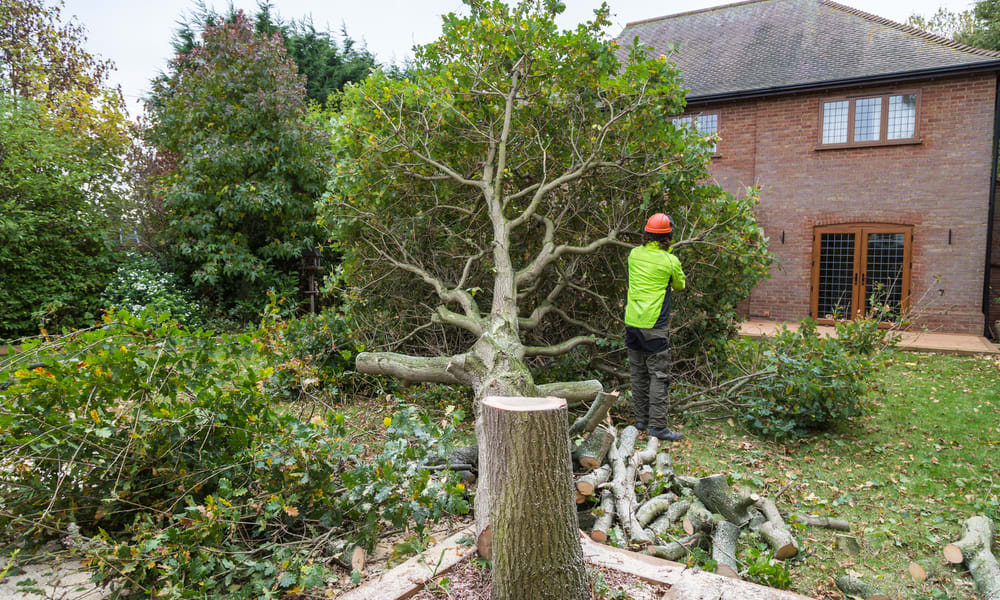The Complete Guide to Tree Trimming Services: Costs, Contractors, and Booking
Professional tree trimming is essential for maintaining healthy trees, ensuring property safety, and preserving landscape aesthetics. Whether you're dealing with overgrown branches, storm damage, or routine maintenance, understanding the costs involved and how to find reliable contractors can save you time, money, and potential headaches. This comprehensive guide breaks down everything you need to know about tree trimming services, from average pricing to finding and booking the right professionals for your specific needs.

Understanding Tree Trimming Service Costs
Tree trimming services vary widely in price depending on several key factors. Most homeowners can expect to pay between $250 and $500 for standard tree trimming, though costs can range from as low as $75 for small jobs to over $1,500 for large or complex projects. The primary factors affecting price include tree size, location, condition, and the extent of trimming required. Tall trees exceeding 60 feet typically cost more to trim due to increased equipment needs and safety concerns. Additionally, trees near power lines or buildings require specialized techniques that increase labor costs.
Timing also impacts pricing—emergency services after storms generally command premium rates, while scheduling during off-peak seasons (late fall or winter) can result in discounts of 10-20%. Most professional arborists charge either by the hour ($50-$150) or provide a flat rate based on their assessment of the job complexity.
What to Look For in Tree Trimming Contractors
When searching for tree trimming professionals, certifications and insurance should be your primary considerations. Reputable contractors typically hold credentials from organizations like the International Society of Arboriculture (ISA) or the Tree Care Industry Association (TCIA). These certifications indicate specialized training in proper tree care techniques and safety protocols.
Always verify that potential contractors carry both liability insurance (minimum $1 million coverage) and workers’ compensation insurance. This protects you from financial responsibility should accidents or property damage occur during the job. Ask for proof of insurance and call the provider to verify current coverage.
Beyond credentials, look for contractors with at least 3-5 years of experience in your region, as they’ll be familiar with local tree species and potential issues. Customer reviews and portfolios of previous work can provide valuable insights into their quality and reliability. Professional contractors should also offer detailed written estimates specifying exactly what services will be performed, the cleanup process, and timeframes for completion.
How to Book Tree Trimming Services Efficiently
Booking tree trimming services requires advance planning for the best results. For routine maintenance, schedule appointments 1-3 months ahead, especially during peak seasons (spring and summer) when the best contractors are often booked solid. Start by requesting estimates from 3-5 different companies to compare prices and services offered.
When contacting contractors, provide specific details about your trees—their approximate height, species (if known), location on your property, and any specific concerns. Phone consultations can help narrow down your choices, but on-site assessments are essential for accurate quotes. During these visits, discuss your goals clearly: Are you trimming for aesthetics, safety, tree health, or all three?
Most reputable companies offer online booking options or scheduling apps that make the process more convenient. When finalizing your booking, confirm important details like arrival times, project duration, payment terms, and cleanup procedures. Many professionals require deposits of 10-30%, with the balance due upon completion, though payment structures vary by company.
Comparing Tree Trimming Service Providers
When deciding on a tree trimming service, comparing multiple providers helps ensure you receive quality work at reasonable rates. Below is a comparison of typical service options available in most regions:
| Service Provider Type | Average Cost Range | Services Offered | Pros & Cons |
|---|---|---|---|
| Certified Arborists | $150-$500+ per hour | Comprehensive tree health services, precision trimming, disease diagnosis | Pros: Expert knowledge, proper techniques; Cons: Higher rates |
| Professional Tree Services | $250-$800 per job | Trimming, removal, stump grinding, emergency services | Pros: Fully equipped, insured; Cons: May not have certified arborists |
| Landscape Companies | $200-$400 per job | Basic trimming, multiple property services | Pros: One-stop service, package deals; Cons: Less specialized tree knowledge |
| Independent Operators | $75-$300 per job | Basic trimming, removal | Pros: Lower rates; Cons: May lack insurance, equipment, or expertise |
Prices, rates, or cost estimates mentioned in this article are based on the latest available information but may change over time. Independent research is advised before making financial decisions.
Finding Specialized Tree Trimming Contractors
For trees requiring specialized care—such as historic trees, rare species, or those with specific diseases—finding contractors with appropriate expertise becomes crucial. Specialized tree services typically charge 20-30% more than standard services but offer targeted solutions that can extend tree life and prevent costly problems.
Local agricultural extension offices, botanical gardens, and arboretums can often recommend specialists for unusual tree species or conditions. Online directories like TreeBuzz and the ISA’s “Find an Arborist” tool allow you to search for professionals with specific certifications and specialties in your area.
When dealing with protected tree species or properties in conservation areas, ensure your contractor understands relevant regulations and permit requirements. Some municipalities require specific permits even for routine trimming of certain species, and violations can result in substantial fines.
Seasonal Considerations for Tree Trimming
Timing your tree trimming service can significantly impact both results and costs. Winter dormancy periods (late fall through early spring) represent ideal trimming time for most deciduous trees, as the lack of leaves provides better visibility of branch structure and reduced stress on the tree. Fruit trees benefit from late winter pruning before spring growth, while spring-flowering trees should typically be trimmed immediately after blooming.
Avoid trimming oak trees during their growing season (typically April through October in most regions) due to increased susceptibility to oak wilt disease. Similarly, elm trees should not be pruned during beetle activity periods to prevent Dutch elm disease. Scheduling services during off-peak seasons not only ensures proper timing for tree health but often results in better contractor availability and potential discounts of 10-25%.
By understanding these essential aspects of tree trimming services—from costs and contractor selection to booking procedures and timing—homeowners can make informed decisions that benefit both their landscapes and budgets. Regular professional maintenance extends tree life, enhances property safety, and maintains the beauty and value of your outdoor spaces.




